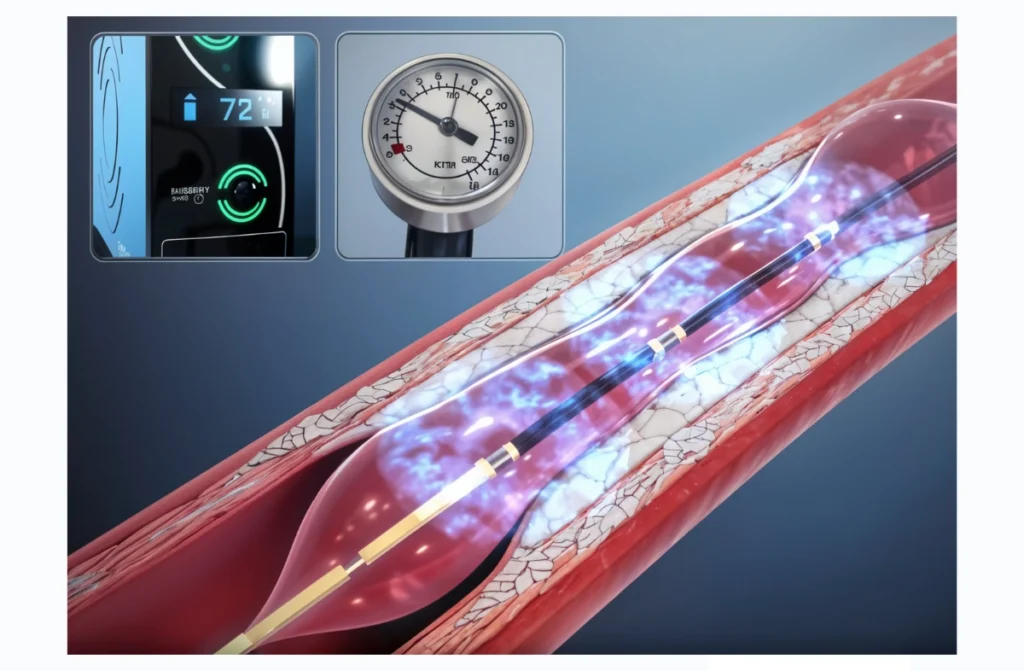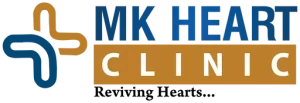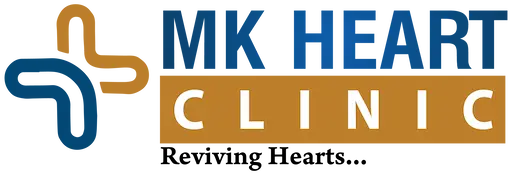In the realm of cardiovascular health, cutting-edge technologies are continuously emerging to provide innovative solutions for conditions that were once deemed challenging to address. One such groundbreaking advancement is Intravascular Shock Wave Lithotripsy in Chennai, a revolutionary procedure that has gained prominence in Chennai for its effectiveness in treating calcified coronary blockage.
This article explores delves into the intricacies of Intravascular Shock wave Lithotripsy in Chennai, exploring its benefits, the procedure itself, and why it stands out as a beacon of hope for individuals grappling with cardiovascular issues.
Understanding Intravascular Shock Wave Lithotripsy
Intravascular shock wave lithotripsy (IVL) is an innovative medical procedure used primarily to treat calcified arterial lesions. Here’s a detailed overview:
What is Intravascular Shock Wave Lithotripsy?
IVL is a minimally invasive technique that uses shock waves to break up calcified plaques within the arteries. This helps to restore proper blood flow and is particularly useful in treating conditions like peripheral artery disease (PAD) and coronary artery disease (CAD), where calcified deposits can restrict blood flow and cause significant health issues.
How Does Intravascular Lithotripsy Shockwave Work?
The intravascular lithotripsy shockwave procedure works by transmitting acoustic pressure waves, or shockwaves, through the arterial walls. These shockwaves create fractures in the calcium deposits, allowing the artery to expand more easily. The treatment is similar to the shockwave lithotripsy used for kidney stones, but it is adapted for use in coronary arteries.
The Procedure of Intravascular Shockwave Lithotripsy in Chennai
Pre-Procedure Preparation
Before undergoing intravascular shockwave lithotripsy in Chennai, patients undergo a thorough evaluation that includes:
- Medical History Review: Assessment of the patient’s overall health and medical history.
- Diagnostic Tests: Tests such as coronary angiography, CT scans, and blood tests to determine the extent of calcification.
- Medication Management: Adjusting current medications and prescribing new ones if necessary to prepare for the procedure.
Proper preparation ensures the safety and effectiveness of the treatment.
During the Procedure
The intravascular shockwave lithotripsy procedure involves the following steps:
- Sedation and Anesthesia: Local anesthesia and mild sedation are administered to keep the patient comfortable.
- Catheter Insertion: A catheter is inserted through a small incision in the groin or wrist and guided to the affected coronary artery.
- Shockwave Delivery: The catheter delivers controlled shockwaves to the calcified area, breaking up the calcium deposits.
- Artery Expansion: A balloon or stent is used to expand the artery and improve blood flow.
The entire procedure typically takes about one to two hours, and patients can often go home the same day or the next.
Post-Procedure Care
After the procedure, patients must follow specific post-procedure care instructions:
- Monitoring: Continuous monitoring of vital signs and heart function.
- Medications: Prescribed medications to prevent blood clots and manage other conditions.
- Lifestyle Changes: Adopting a heart-healthy lifestyle, including a balanced diet, regular exercise, and smoking cessation.
These measures help ensure a smooth recovery and long-term heart health.
Recovery and Follow-Up
Recovery from intravascular shockwave lithotripsy in Chennai involves:
- Hospital Stay: Most patients stay in the hospital for observation for a day or two.
- Activity Restrictions: Avoiding strenuous activities for a few days post-procedure.
- Follow-Up Appointments: Regular follow-up visits with the cardiologist to monitor progress and adjust treatment as needed.
Adhering to these guidelines ensures the best possible outcomes for patients.

Intravascular Lithotripsy Shockwave: Advancements and Innovations
Technological Innovations
- Improved Shock Wave Devices: Recent advancements in shock wave technology have led to the development of more precise and efficient devices. These improvements enhance the efficacy of plaque fragmentation while minimizing damage to surrounding tissues.
- Integration with Other Techniques: IVL is increasingly being used in combination with other interventional techniques, such as balloon angioplasty and stent placement. This integrated approach often results in better outcomes and more comprehensive treatment of complex cases.
Clinical Research and Trials
Chennai is at the forefront of clinical research involving intravascular shock wave lithotripsy. Ongoing studies and trials aim to refine techniques, improve patient selection criteria, and expand the indications for IVL. These efforts contribute to the continual advancement of cardiovascular care.
Training and Expertise
The success of intravascular shock wave lithotripsy relies heavily on the expertise of the performing cardiologist. Training programs and workshops in Chennai ensure that cardiologists stay updated with the latest advancements and techniques in IVL, contributing to better patient outcomes.
Benefits and Advancements in Intravascular Shockwave Lithotripsy
Why Choose Intravascular Shockwave Lithotripsy?
Intravascular shockwave lithotripsy offers several compelling benefits, including:
- Minimally Invasive Nature: Reduced recovery time and minimal scarring.
- High Success Rate: Effective at treating heavily calcified arteries that are challenging to manage with other methods.
- Reduced Complications: Lower risk of complications compared to traditional surgical options.
These advantages make it an attractive option for patients seeking effective treatment for calcified coronary blockages.
Technological Innovations
Recent advancements in intravascular lithotripsy shockwave technology have enhanced its effectiveness and safety. Innovations include:
- Enhanced Catheter Design: Improved catheter designs allow for better delivery of shockwaves and increased precision.
- Real-Time Imaging: Advanced imaging techniques enable real-time visualization of the artery during the procedure.
- Optimized Shockwave Delivery: New methods for delivering shockwaves ensure consistent and effective calcium fragmentation.
These technological advancements contribute to the overall success and safety of intravascular shockwave lithotripsy in Chennai.
Comparing Intravascular Shockwave Lithotripsy with Other Treatments
Intravascular shockwave lithotripsy is compared favorably with other treatments for calcified coronary blockages:
- Versus Balloon Angioplasty: IVL is more effective at breaking up hard calcium deposits that balloon angioplasty alone may not address.
- Versus Rotational Atherectomy: IVL is less invasive and has a lower risk of complications compared to rotational atherectomy.
- Versus Coronary Bypass Surgery: IVL offers a less invasive alternative to open-heart surgery, with a quicker recovery time.
Patients can discuss with their cardiologists to determine the best treatment option based on their specific condition.
Effective Treatment for Calcified Arteries
- Intravascular Shock Wave Lithotripsy (IVL): Breaks up calcified plaques using shock waves.
- Balloon Angioplasty: Expands narrowed arteries by inflating a balloon inside the vessel.
- Stenting: Places a stent to keep the artery open after angioplasty.
- Orbital Atherectomy Treatment: Removes plaque using a rotating cutting device.
- Medications: Statins, calcium channel blockers, and antiplatelet drugs to manage and prevent plaque buildup.
- Lifestyle Changes: Diet, exercise, and smoking cessation to reduce further calcification.
- Coronary Artery Bypass Grafting (CABG): Bypasses blocked arteries using grafts.
- Regular Monitoring: Routine check-ups to track artery health and manage risk factors.
Read also: Rotational Atherectomy Treatment in Chennai
Patient-Centric Approach
- Personalized Care: Tailoring treatment plans to individual patient needs and conditions.
- Holistic Treatment: Addressing physical, emotional, and social aspects of health.
- Patient Education: Providing comprehensive information about conditions and treatments.
- Active Participation: Encouraging patients to be involved in decision-making.
- Empathy and Support: Offering compassionate care and emotional support.
- Communication: Maintaining open, honest, and ongoing dialogue with patients.
- Multidisciplinary Teams: Collaborating across specialties to provide coordinated care.
- Follow-Up Care: Ensuring continuous support and monitoring after treatment.
- Accessibility: Making healthcare services easily available and convenient for patients.
Conclusion
Intravascular Shock Wave Lithotripsy in Chennai marks a significant stride in the realm of cardiovascular care, offering hope and effective solutions for individuals grappling with calcified coronary arteries. The city’s commitment to advanced healthcare, coupled with the precision and benefits of IVL, positions Chennai as a beacon of medical innovation.
Read also: Transcatheter Mitral Valve Replacement In Chennai

